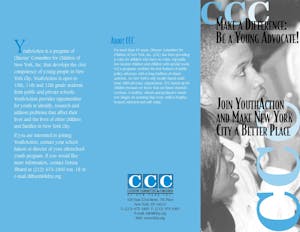

Census 2020: Resource Page
Insights
February 15, 2019
On behalf of the New York Counts 2020 coalition, thanks for your interest in our 2020 Census outreach efforts. Citizens’ Committee for Children of New York are honored to be among such motivated advocates and strong partners in the NYC Counts 2020 coalition.
We also want to thank all who came out to our 2020 Census Policy Briefing on February 6th. The turnout and overall interest has us motivated to play our part in ensuring young children, immigrants, low-income families, and other vulnerable populations are no longer undercounted – and thus underrepresented.
We want to express our thanks to those who presented and led group discussions at the briefing including:
- Liz OuYang, Coordinator for New York Counts 2020
- Steve Romelewski, Director of CUNY Mapping Service at the Center for Urban Research at the Graduate Center
- Amy Torres, Director of Policy and Advocacy at the Chinese-American Planning Council
- Ann Amstutz Hayes, Senior Vice President of Scholastic National Partnerships
- Laura Jankstrom, CCC Director of Civic Engagement Programs
- Jennifer Swayne, Chief Strategy Officer at Brooklyn Community Services
- Yolanda Colon, Deputy Director of Youth Services at Brooklyn Community Services
- Sophia Halkitis, Data Analyst at CCC
- Quinn Rhi, Civic Participation Senior Associate at Minkwon Center for Community Action
As we discussed during the briefing, New York City residents are at a considerable risk to be undercounted when it comes to the census. Whether it be an outdated address, lack of institutional trust or language barriers — our city is being underrepresented. However, with your help, we believe the outcome will be different in 2020.
Click the “plus” signs below to reveal more information.



